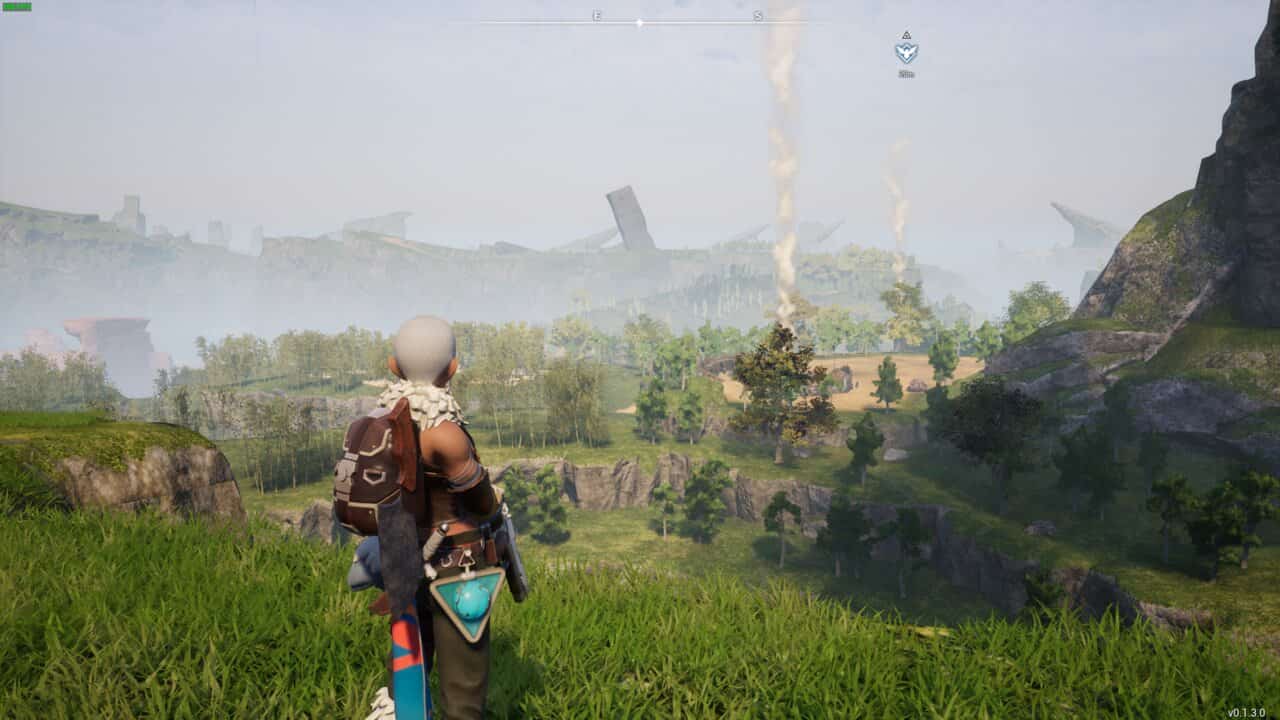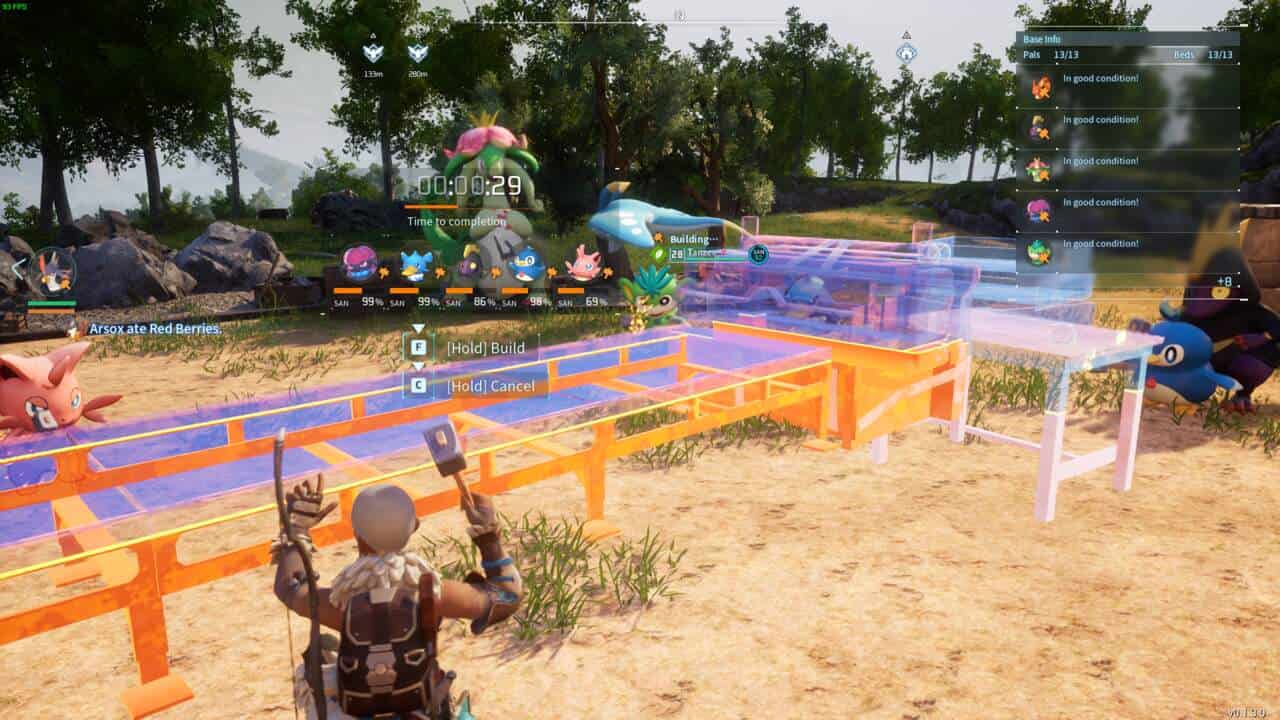You can trust VideoGamer. Our team of gaming experts spend hours testing and reviewing the latest games, to ensure you're reading the most comprehensive guide possible. Rest assured, all imagery and advice is unique and original. Check out how we test and review games here
Inspiration is a integral part of game development. Ask any developer, and they’ll list influential games that shaped their work. Ideas shape new ideas, drawing from the existing to create the new. Without it, the art form would be in a sorry state. But there’s a clear line between inspiration and plagiarism, copyright infringement, blatant theft, or however you want to describe it. Palworld lumbers, passing that line overtly and repeatedly, likely flouting copyright law in the process as Nintendo’s legal arm slowly fires up.
It isn’t just in the obvious way the eponymous Pals bear more than a passing resemblance to Nintendo’s critter-collecting series, either. There’s something unsettling about Palworld. It doesn’t sit right. It lacks a shred of originality in its most basic parts. It barely feels like a game a lot of the time, from the rudimentary UI and bog-standard animations to the stale music and familiar textures that make up the Palapagos Islands, the name of its largely empty and lifeless open world and another lazy play, this time on the Galapagos Islands.

But unlike the real-world ecological oddity and its unique endemic species, the Palapagos Islands feel familiar, a bland quilt of repetitive assets seemingly pulled from an Unreal Engine 5 pack and haphazardly stitched into a world part Genshin Impact, part Omega Force’s excellent Wild Hearts, but with half the charm and none of the thoughtfulness. With no story or even the gentlest of narrative nudges, you’re left to your own devices to punch trees and critters to kickstart a long, time-sapping trudge to survive and then thrive.
Before long, you’ll chuck a few spheres at weak Pals, put them to work in your base, exploiting and breeding them for their innate propensity for this or that elemental skill to power a furnace, harvest berries, craft ingots, bake cakes, or chip away at stone deposits. Out into the open world you’ll go to gather rarer resources to craft better gear, and ultimately, guns, to hunt down and capture even more Pals to run even more efficient and complex machinery, to make even better guns, and on and on.
And, so, the loop continues, pushing for an ever more efficient manufacturing setup. Bigger and better Pals, more resources, more crafting, more weapons, just more of everything – a glutinous, almost capitalistic churn for excess that quickly eclipses the gentle survival demands of the early game. Throw in a few uninspired boss fights, samey dungeons, and explorable biomes flogging a semblance of variety, and you’ve done it all.

It’s hard to pinpoint exactly what it is about this loop that both grates and jars but is equally appealing. Indeed, its basic principles match those underpinning most survival crafting games. I think it has to do with how Palworld doesn’t feel meticulously designed and intentional in a conventional video game sense. It feels artificial, streamlined to tap into our most basic escapist urges, to feed our attraction to repetitive, logical cycles with an endless streak of limitless, yet valueless, rewards. It’s almost insidious in how easily you slide into its irresistible loop.
Playing Palworld leaves the impression of having had fun. It’s a brand of ersatz, manufactured enjoyment that, when the hype machine peters out and you look back on the hours of mindless grinding, will spring up hollow. All time wasted on a game designed from the ground up to suck you in but chuck you out feeling empty, spent, leaving little in the way of satisfaction or anything resembling a meaningful experience.
As a friend put it recently, Palworld is the game Pokemon fans have wanted for a decade. Putting aside the generalisation here – portions of the fan base are up in arms about the whole thing – maybe that’s where my problem with Palworld lies. I have no ties to the critter-catching series, and ‘Pokemon with guns’ leaves me indifferent. And, when you wade past that low-hanging memetic fruit, Palworld doesn’t offer much else.

The novelty of strapping an assault rifle to a sneering monkey-like Pal or using a fox as a flame thrower wears thin pretty quickly, especially considering that, when dissected, Palworld is a game of bare minimums, unscrupulous and derivative, soulless. It’s a game designed by the numbers to hit all the right notes to keep you hooked on its addictive catch-grind-craft loop, to seek out directionless progression to an end that, 30 hours in, still isn’t clear to me.
But, with eight million copies sold and counting on Steam alone, players are clearly having a great time. I don’t understand why. When loading up Palworld over the past week, there hasn’t been any of that shapeless but very real glee that accompanies the prospect of sinking time into a good game, one that swirls in the mind when you’re not playing, or at least has something interesting or unique, whether mechanically, visually, or in its narrative structure. Something, of late, that’s happened with Cocoon, Prince of Persia: The Lost Crown, Alan Wake 2, and Baldur’s Gate 3, to name a handful. Palworld has none of that and, in all honesty, is all a bit glib.
Reviewed on PC. Code sourced by VideoGamer.
Palworld
- Platform(s): PC, Xbox, Xbox Series S/X
- Genre(s): Action, Adventure, Indie, RPG, Shooter


